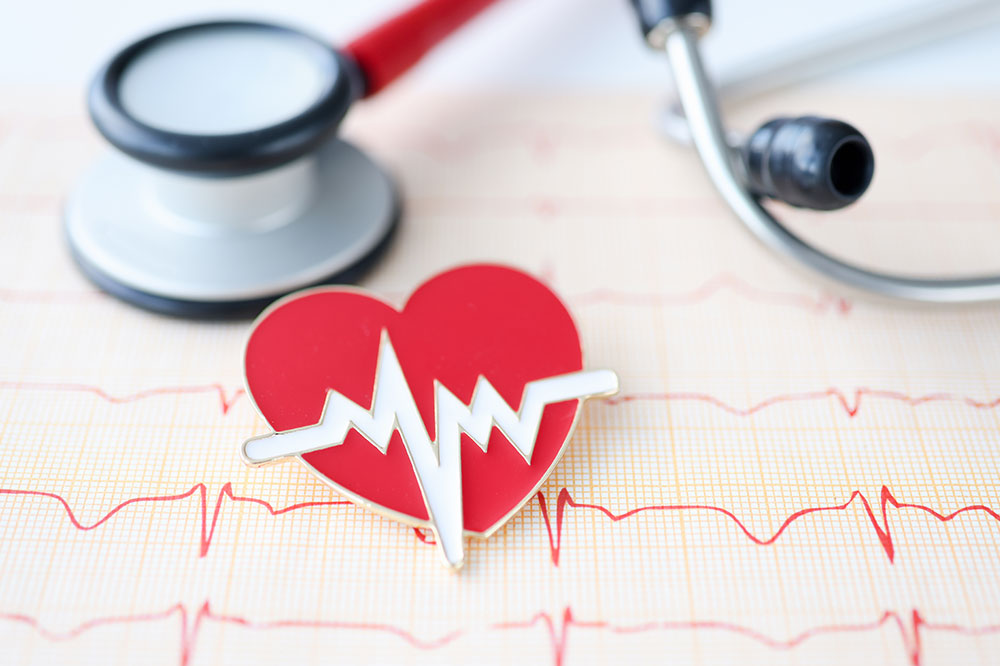
Arrhythmias and the benefits of ablation therapy
Arrhythmias, also known as abnormal heart rhythms, occurs when the electrical impulses that control the heart’s pumping do not function properly. Irregular heart rhythms can occur in the upper or lower chambers of the heart, causing the heart to beat too fast, too slowly, or irregularly. Heat or cold energy is used to destroy small areas of tissue in the heart that cause arrhythmia via a procedure known as ablation.
Symptoms of arrhythmias
Some common symptoms of arrhythmia include:
Palpitations, or the feeling that your heart is racing, pounding, or fluttering.
Experiencing sudden, unexplained sweating.
Experiencing breathing problems, especially when exercising.
Feeling pressure, tightness, or discomfort in the chest.
Feeling lightheaded, dizzy, or faint.
Feeling tired or weak.
Losing consciousness, especially during physical activity or periods of stress.
Some arrhythmias may not cause symptoms and can only be detected during a routine healthcare exam. It is important to speak with your doctor if you experience any of the above symptoms to determine the cause and the appropriate treatment.
What is ablation therapy, and can it treat arrhythmia?
Two types of arrhythmia can be treated with ablation therapy: atrial fibrillation (AFib) and supraventricular tachycardia (SVT).
AFib occurs when the heart’s upper chambers beat irregularly and are the most common type of arrhythmia . Blood clots, strokes, and heart failure can occur if left untreated. During ablation therapy for AFib, small areas of heart tissue that cause abnormal electrical signals, resulting in arrhythmias, are destroyed.
Symptoms of arrhythmia include rapid heartbeats caused by malfunctioning electrical signals in the heart’s upper chambers. Symptoms include dizziness, fainting, and chest pain. When treating SVT, ablation therapy involves destroying the small areas of heart tissue that cause abnormal electrical signals.
The healthcare professionals in charge will conduct an analysis of the arrhythmias and accordingly decide whether ablation therapy is the best course of action.
Steps involved in ablation therapy
Ablation therapy is typically performed under sedation or general anesthesia and takes 2-4 hours.
Insertion of catheter
An incision is made in the groin or arm, and a thin, flexible catheter is inserted and guided to the heart. An electrode in the catheter emits heat or cold energy.
Mapping of the heart
A catheter electrode maps the electrical signals in the heart and identifies areas causing an arrhythmia.
Ablation of tissue
As soon as the abnormal areas have been identified, the electrode delivers heat or cold energy to destroy the tissue causing the arrhythmia.
Monitoring of heart rhythm
The heart’s rhythm is continuously monitored during the procedure to ensure the abnormal areas have been successfully ablated.
Recovery
Patients are monitored for a few hours after the procedure to ensure no complications. It is common for them to be discharged the same or the next day. Most patients can return to their normal activities within a couple of days.
Although ablation therapy is relatively safe, like any procedure, risks are involved. Some risks to watch out for include bleeding, infection, heart damage, and stroke. So, the patient’s family and the doctors must ensure that everyone involved understands the risks completely before proceeding with ablation therapy.
Benefits of ablation therapy for arrhythmias
Compared to other treatments for arrhythmias, like prescriptions or implantable devices, ablation therapy has several advantages. Here are some of the advantages of ablation therapy:
Higher success rates
The success rate of ablation therapy is higher than that of prescriptions or implantable devices. According to studies, ablation therapy for AFib has a success rate of over 70%, whereas prescriptions have a success rate of only 50-60%.
Improved quality of life
It is possible to improve a patient’s quality of life by undergoing ablation therapy. Shortness of breath, fatigue, and chest pain are reduced in patients who undergo ablation therapy for AFib or SVT.
Fewer side effects
There are fewer side effects associated with ablation therapy than with prescriptions. Fatigue, dizziness, and nausea are common side effects of prescriptions that treat arrhythmias. Contrary to this, ablation therapy has fewer side effects, with most patients reporting mild fatigue and discomfort.
Reduced healthcare costs
The long-term cost of healthcare can be reduced through ablation therapy. Patients who undergo ablation therapy for arrhythmias are less likely to require hospitalization or emergency care than those who receive treatment or implantable devices.
Conclusion
Arrhythmias can cause many symptoms that significantly impact a patient’s life quality. Fortunately, ablation therapy is a highly effective treatment option for treating heart rhythm disorders and alleviating symptoms. A catheter is used to ablate abnormal tissue that causes arrhythmias, so ablation therapy has a higher success rate and fewer side effects than treatment or implantable devices. Your doctor should determine the underlying cause and appropriate treatment of arrhythmias if you are experiencing symptoms. Managing the condition and living a healthy, active life is possible with the right treatment.




